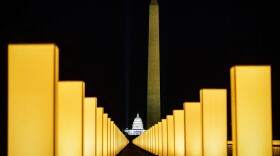-
This year, face masks are on most parents' list of back-to-school supplies. But which ones are most effective? Here's how to choose the right one for your child.
-
After vaccination, antibody levels can help predict how much protection a COVID-19 shot offers, scientists are learning. The finding could speed up the development of future vaccines.
-
The country has beat back the winter surge, and experts credit Americans' improved compliance with precautions like mask-wearing. But we could we still face a resurgence if we let up.
-
In the future, different circumstances will likely determine which vaccine or booster a person receives, based on their antibodies — and which variant is common in their region.
-
Sepsis is one of the most common causes of death for hospitalized patients. The search for an effective treatment has been frustrating.
-
Dr. Rochelle Walensky says scientists at the Centers for Disease Control and Prevention were "muzzled" and "diminished" by the Trump team, especially during the pandemic. She aims to fix that.
-
As the country faces another wrenching milestone, there are signs of hope that we may be beating back the virus. But a brighter future won't bring back precious lives lost.
-
Many patients suffering from long-term effects can no longer work and want the Social Security Administration to provide guidance on who qualifies for disability benefits.
-
Researchers are trying to learn more about COVID-19 vaccines from original study participants. The quest is hampered because many people who first received a placebo shot are opting for the vaccine.
-
Scientists say the pandemic will end in the U.S. only when we achieve what's called herd immunity. Play with our simulations to see how immunity can stop an outbreak in its tracks.
-
Vaccine eligibility has been expanded to all adults. Use NPR's tool to find out how to book an appointment. Plus, helpful advice about how to navigate the system.
-
A community health center is now immunizing the local homeless population. But vaccination logistics, already complex, are compounded by the additional barriers in communication and transportation.














